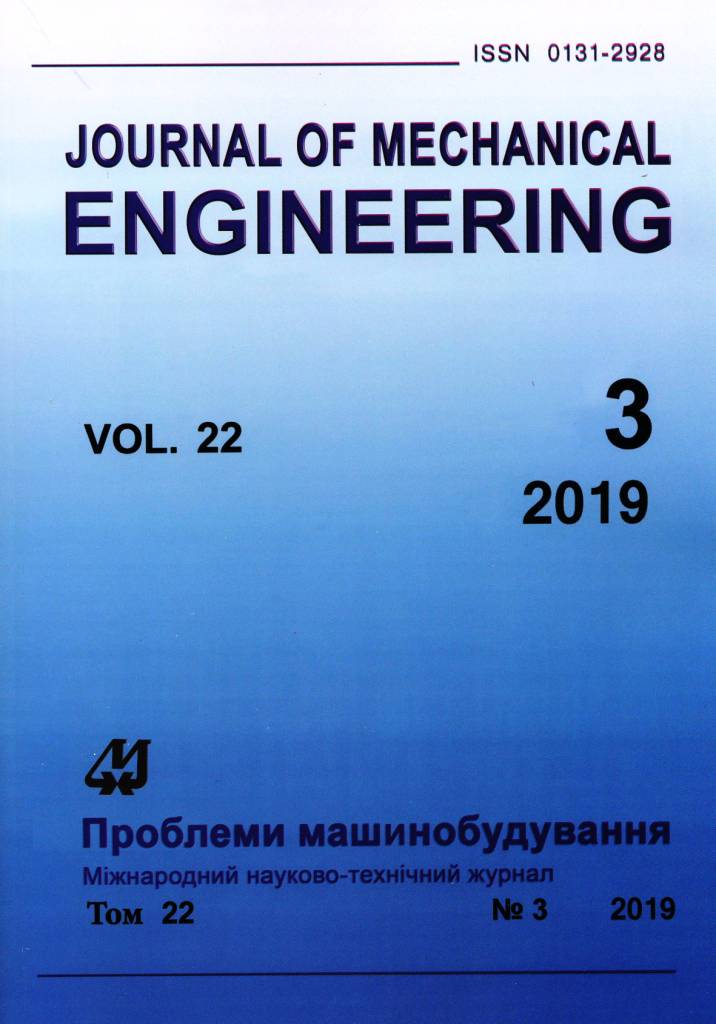Численный анализ рабочих процессов в межлопаточных каналах высоконагруженной турбины судового газотурбинного двигателя с использованием уточненной конечно-элементной модели
Ключевые слова:
судовой газотурбинный двигатель, трехмерные конечные элементы, проточная часть турбины, корневое и периферийное сечения, поля чисел Маха, скоростей и давленияАннотация
Рассмотрены вопросы проектирования одноступенчатой высоконагруженной турбины судового газотурбинного двигателя. Объектом исследования являются аэродинамические характеристики вязкого трехмерного турбулентного течения газового потока в проточной части рассматриваемой турбины. На данном этапе проведен численный анализ рабочих процессов в межлопаточных каналах турбинной ступени. При проектировании следует учитывать тот факт, что возможности усовершенствования формы проточной части при помощи оптимизации форм лопаточных каналов в плоских сечениях не соответствуют требованиям, предъявляемым к высоконагруженным турбинам. Альтернативой данному подходу является применение методов вычислительной газовой динамики в трехмерной постановке. Поэтому в данной работе изложена методика построения уточненной конечноэлементной модели течения рабочего тела в проточной части одноступенчатой высоконагруженной турбины высокого давления судового газотурбинного двигателя. Для решения поставленной задачи построена конечноэлементная сетка гексагонального типа с использованием трехмерных уравнений Навье-Стокса для случая вязкого течения рабочего тела. Представленная в данной работе трехмерная модель проточной части турбины состоит из двух секций статора и четырех секций ротора. Секция включает в себя перо лопатки с верхним и нижним обводами, упрощенно моделирующими корневую и бандажную полки. В процессе расчетов использовались такие типы граничных условий, как «вход», «выход» и «стенка». На входе было задано полное давление потока и температура потока. Так как турбина является одноступенчатой, то на входе в расчетную область поток направлен в осевом направлении. На выходе из расчетной области задано статическое давление. Также на стенке использовались граничные условия непротекания и прилипания. С использованием разработанной математической модели определены поля чисел Маха, скоростей потока и статического давления в корневом и периферийном сечениях проточной части турбины. Расчет проводился в нестационарной постановке с временным шагом 1,5974×10-6 с, что соответствует углу поворота ротора относительно статора на 0,09 градусов. Суммарное количество временных итераций составляло 200. Полученные результаты могут быть применены при дальнейшем исследовании прочности лопаточного аппарата высоконагруженных судовых газотурбинных двигателей.Библиографические ссылки
Kholshchevikov, K. V., Yemin, O. N., & Mitrokhin V. T. (1986). Teoriya i raschet aviatsionnykh lopatochnykh mashin [Theory and calculation of aircraft blade machines].Moscow: Mashinostroyeniye, 432 p. (in Russian).
Rizk N. K. & Mongia, H. C. (1990). Three-dimensional combustor performance validation with high-density fuels. Journal of Propulsion and Power, vol. 6, no. 5, pp. 660−667. https://doi.org/10.2514/3.23268
Menter F. R. (1994). Two-equation eddy-viscosity turbulence models for engineering applications. AIAA Journal, vol. 32, no. 8, pp. 1598−1605. https://doi.org/10.2514/3.12149
Takemilsu, N. (1990). An analytical study of the standard k-e model. Journal of Fluid Engineering, vol. 112, iss. 2, pp. 192–198. https://doi.org/10.1115/1.2909387
Ivanov, M. Ya. & Krupa, V. G. (1993). Computation of 3D viscous cascade flow. Fluid Dynamics, vol. 28, iss. 4, pp. 476–484. https://doi.org/10.1007/BF01342682
Shang, T. & Epstein, A. H. (1997). Analysis of hot streak effects on turbine rotor heat load. ASME Journal of Turbomachinery, vol. 119, iss. 3, pp. 544−553. https://doi.org/10.1115/1.2841156
Samarskiy, A. A. & Vabitsiyevich, P. N. (2009). Vychislitelnaya teploperedacha [Computational heat transfer]. Moscow: Editorial, 784 p. (in Russian).
Sosunov, V. A. & Chepkin, V. M. (2003). Teoriya, raschet i proyektirovaniye aviatsionnykh dvigateley i energeticheskikh ustanovok [Theory, calculation and design of aircraft engines and power plants]. Moscow: Moscow Power Engineering University Publ., 677 p. (in Russian).
Lecheler, S. (2014). Numerische stromungsberechnung [Numerical current calculations]. Munich: Springer Fachmedien Wiesbaden, 199 p. https://doi.org/10.1007/978-3-658-05201-0 (in German).
Launder, B .E. & Spalding, D. B. (1994). The numerical computation of turbulent flows. Computational Methods of Applied Mechanics Engineering, vol. 3, iss. 2, pp. 269−289. https://doi.org/10.1016/0045-7825(74)90029-2
Загрузки
Опубликован
Выпуск
Раздел
Лицензия
Copyright (c) 2019 Serhii O. Morhun

Это произведение доступно по лицензии Creative Commons «Attribution-NoDerivatives» («Атрибуция — Без производных произведений») 4.0 Всемирная.
Авторы, публикующиеся в этом журнале, соглашаются со следующими условиями:
- Авторы оставляют за собой право на авторство своей работы и передают журналу право первой публикации этой работы на условиях лицензионного договора (соглашения).
- Авторы имеют право заключать самостоятельно дополнительные договора (соглашения) о неэксклюзивном распространении работы в том виде, в котором она была опубликована этим журналом (например, размещать работу в электронном хранилище учреждения или публиковать в составе монографии), при условии сохранения ссылки на первую публикацию работы в этом журнале.
- Политика журнала позволяет размещение авторами в сети Интернет (например, в хранилищах учреждения или на персональных веб-сайтах) рукописи работы, как до подачи этой рукописи в редакцию, так и во время ее редакционной обработки, поскольку это способствует возникновению продуктивной научной дискуссии и позитивно отражается на оперативности и динамике цитирования опубликованной работы (см. The Effect of Open Access).

